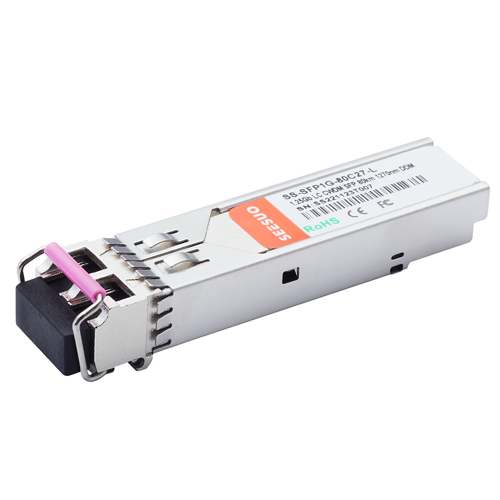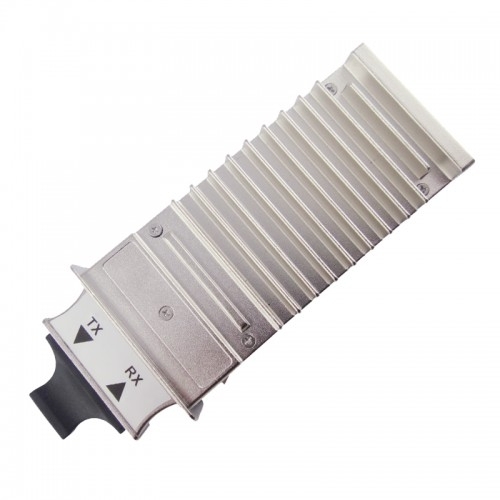- Related articles
- What is QSFP transceiver?
- What Is GJDFBV Fiber Optic Cable?
- Optical Transceivers for Cisco WS-C3650-48TQ-E Switch
- Optical Transceivers for Cisco WS-C3650-24PD-E Switch
- All Cisco GLC-SX-MM's information (List price, Specs, Datasheet PDF, Compatibility matrix)
- The Uses of PCI Express x1
- Optical Transceivers for Cisco WS-C3650-24PS-L Switch
- Optical Transceivers for Cisco SG350-28-K9-EU Switch
- Optical Transceivers for Cisco WS-C2960+48TC-L Switch
- How to Reduce PCIe Bus Latency?

Definition:
The small form-factor pluggable (SFP) is a compact, hot-pluggable transceiver used for both telecommunication and data communications applications. The form factor and electrical interface are specified by a multi-source agreement (MSA) under the auspices of the SFF Committee. It interfaces a network device motherboard (for a switch, router, media converter or similar device) to a fiber optic or copper networking cable. It is a popular industry format jointly developed and supported by many network component vendors. SFP transceivers are designed to support SONET, gigabit Ethernet, Fibre Channel, and other communications standards. Due to its smaller size, SFP obsolesces the formerly ubiquitous gigabit interface converter (GBIC); the SFP is sometimes referred to as a Mini-GBIC. In fact, no device with this name has ever been defined in the MSAs.
The 10-Gigabit Ethernet X2 transceiver module is a hot-swappable I/O device that plugs into 10-Gigabit Ethernet ports. Figure 1 shows an X2 transceiver module with the major features identified. The X2 transceiver module connects the electrical circuitry of the system with the optical or copper network.
Difference Between X2-10GB-SR and SFP-10G-SR
10GBASE X2 modules offer customers a wide variety of 10 Gigabit Ethernet connectivity options for data center, enterprise wiring closet, and service provider transport applications.
Main features of Cisco 10GBASE X2 modules include:
- Support 10GBASE Ethernet
- Hot-swappable input/output device plugs into an Ethernet X2 port of a Cisco switch or router to link the port with the network
- Provides flexibility of interface choice
- Supports “pay-as-you-populate” model
- Supports the Cisco quality identification (ID) feature that enables a Cisco switch or router to identify whether the module is certified and tested by CiscoHas optical interoperability with respective 10GBASE Xenpak, 10GBASE XFP and 10GBASE SFP+ modules on the same link.
10GBASE SFP+ modules give you a wide variety of 10 Gigabit Ethernet connectivity options for data center, enterprise wiring closet, and service provider transport applications.
SFP+ modules offer the following features and benefits.
- Industry’s smallest 10G form factor for greatest density per chassis
- Hot-swappable input/output device that plugs into an Ethernet SFP+ port of a Cisco switch (no need to power down if installing or replacing)
- Supports “pay-as-you-populate” model for investment protection and ease of technology migration
- Digital optical monitoring capability for strong diagnostic capabilities
- Optical interoperability with 10GBASE XENPAK, 10GBASE X2, and 10GBASE XFP interfaces on the same link
Conclusion:
SFP transceiver can be regarded as the upgrade version of GBIC module. Unlike GBIC with SC fiber optic interface, SFP is with LC interface and the main body size of SFP is only about half of GBIC, which makes the SFP space saving. SFP interfaces a network device mother board (for a router, switch, media converter or similar devices) to a fiber optic or copper networking cable.
X2 optics always shaves a Tx (sending laser) and a Rx side (receiver). The difference between the sending power (in dB) and the receiving power (in dB) is called the power budget and will determine the distance an optic can cover, where the laser light (in nanometers) also has an important role.























































